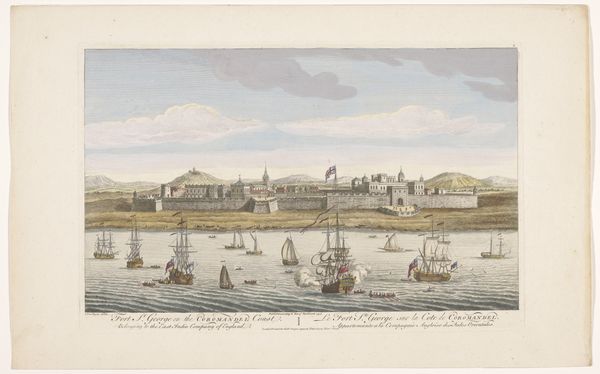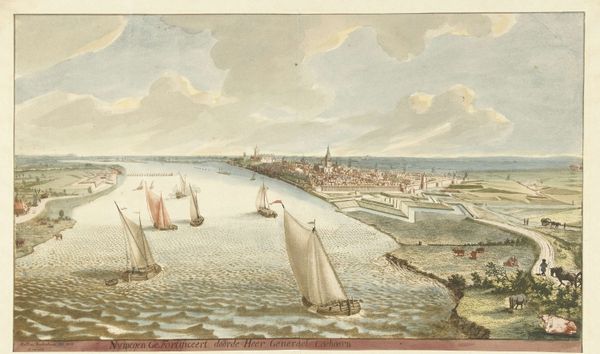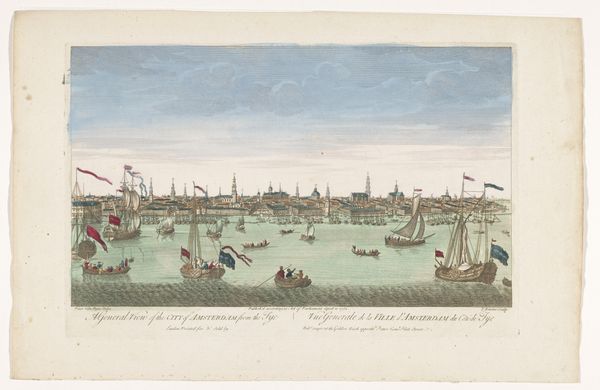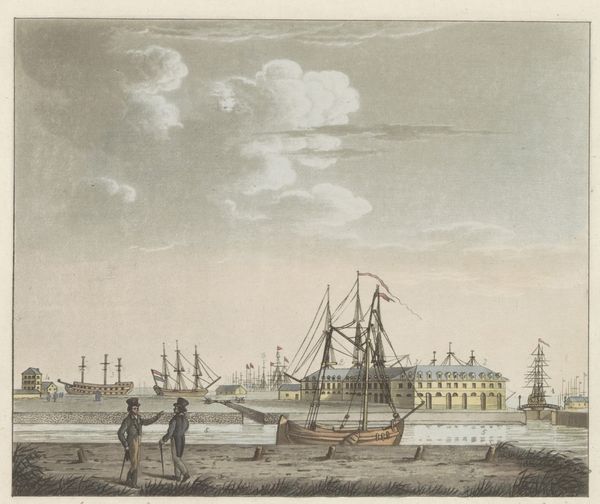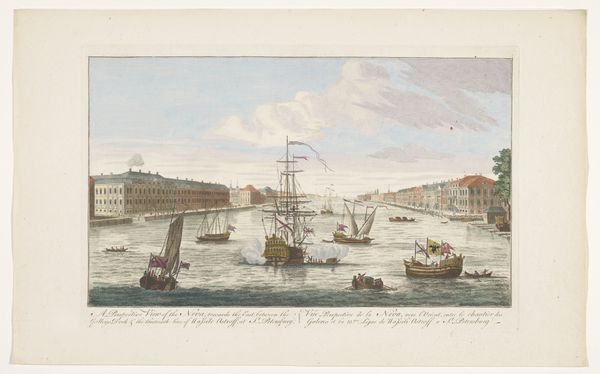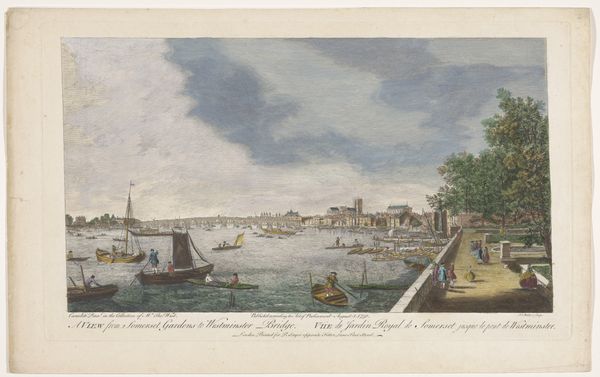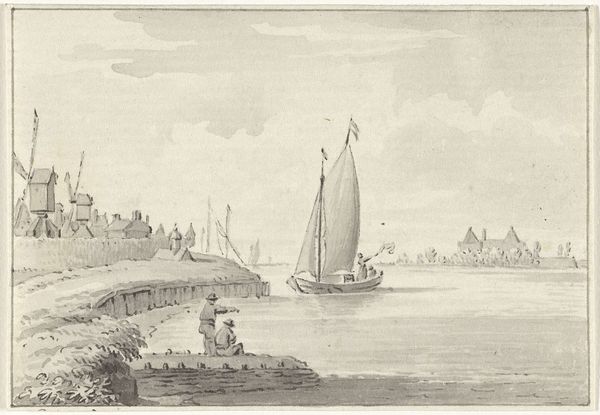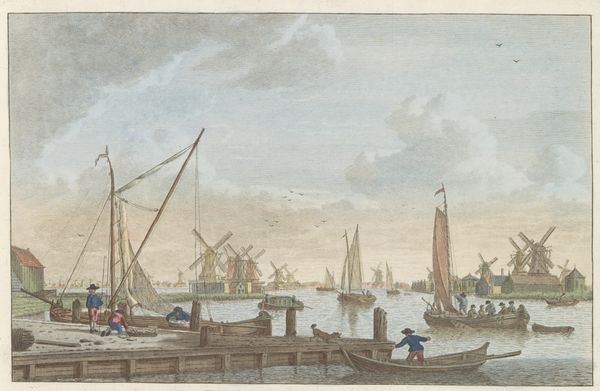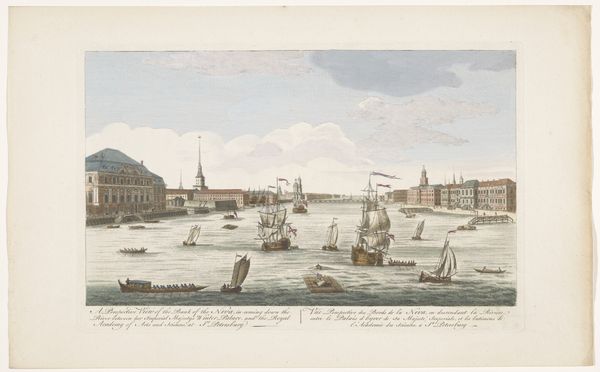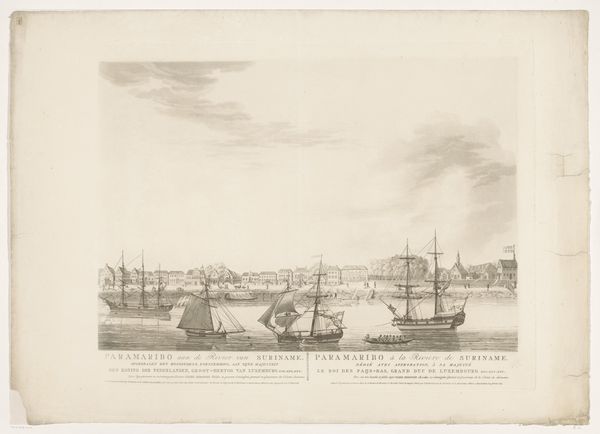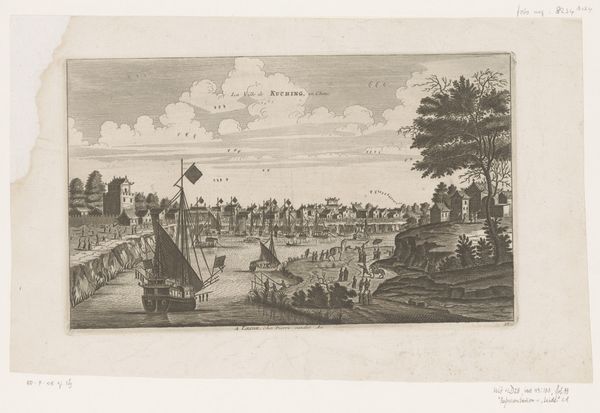
print, watercolor, engraving
# print
#
landscape
#
watercolor
#
orientalism
#
15_18th-century
#
cityscape
#
watercolour illustration
#
engraving
Dimensions: height 258 mm, width 395 mm
Copyright: Rijks Museum: Open Domain
Curator: Looking at "Gezicht op Fort William te Calcutta," created around 1754 by Robert Sayer, what's your first take on this landscape scene? Editor: Bleak. Despite the sunshine and boats, I see labor. Building materials, rigging... someone gathered those. It all seems meticulously built, maybe too clean. Curator: It certainly presents a sanitized view. As a print with watercolor and engraving, it reproduces and disseminates an ideal of British presence in Bengal. It emphasizes control through architecture and maritime power. Notice how the fort dominates the scene. Editor: Exactly, "control". But at what cost, and who did the actual work? I wonder about the source of the pigment used for the watercolor. Where was it mined? How were the engraving plates made? Curator: These views were instrumental in shaping European perceptions. Prints like these justified and glorified colonial ventures for the public back home. The orderly cityscape contrasts sharply with realities on the ground, conveniently omitted from view. Editor: And that omission is deliberate, isn't it? It's not just about the aesthetics, it's a political statement. This piece functions as propaganda. Who consumed it and what narratives did it reinforce? Curator: Precisely. These images solidified imperial narratives. They normalized and romanticized what was, in effect, resource extraction, commercial exploitation, and political domination. The consumption of this kind of art enabled support for imperial expansion. Editor: Which speaks to the very physical matter of the print itself. It's an object meant for mass production and widespread dissemination. Even its creation embodies colonial mechanics. Curator: Absolutely. Seeing it through this lens challenges the idealized Orientalist view it presents, laying bare the historical and social forces at play. It highlights the power of imagery to influence perception. Editor: And reminds us that these "picturesque" scenes have very real consequences attached to their making and their meanings. Thinking about the physical labor embedded helps in peeling back that "pretty" veneer. Curator: Indeed. By analyzing its composition, context, and distribution, we gain critical insights into the socio-political landscape of its time. Editor: Agreed. Understanding how things are constructed - be it the print or an empire - is crucial.
Comments
No comments
Be the first to comment and join the conversation on the ultimate creative platform.
